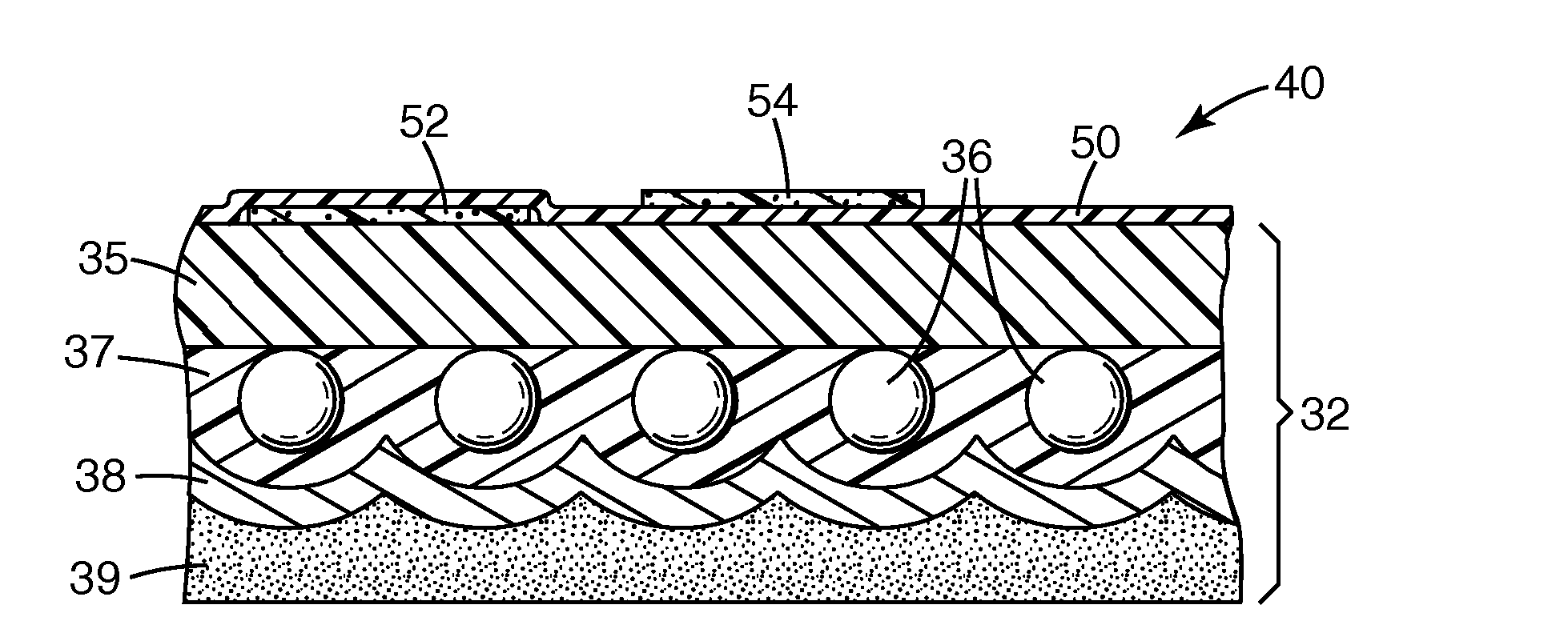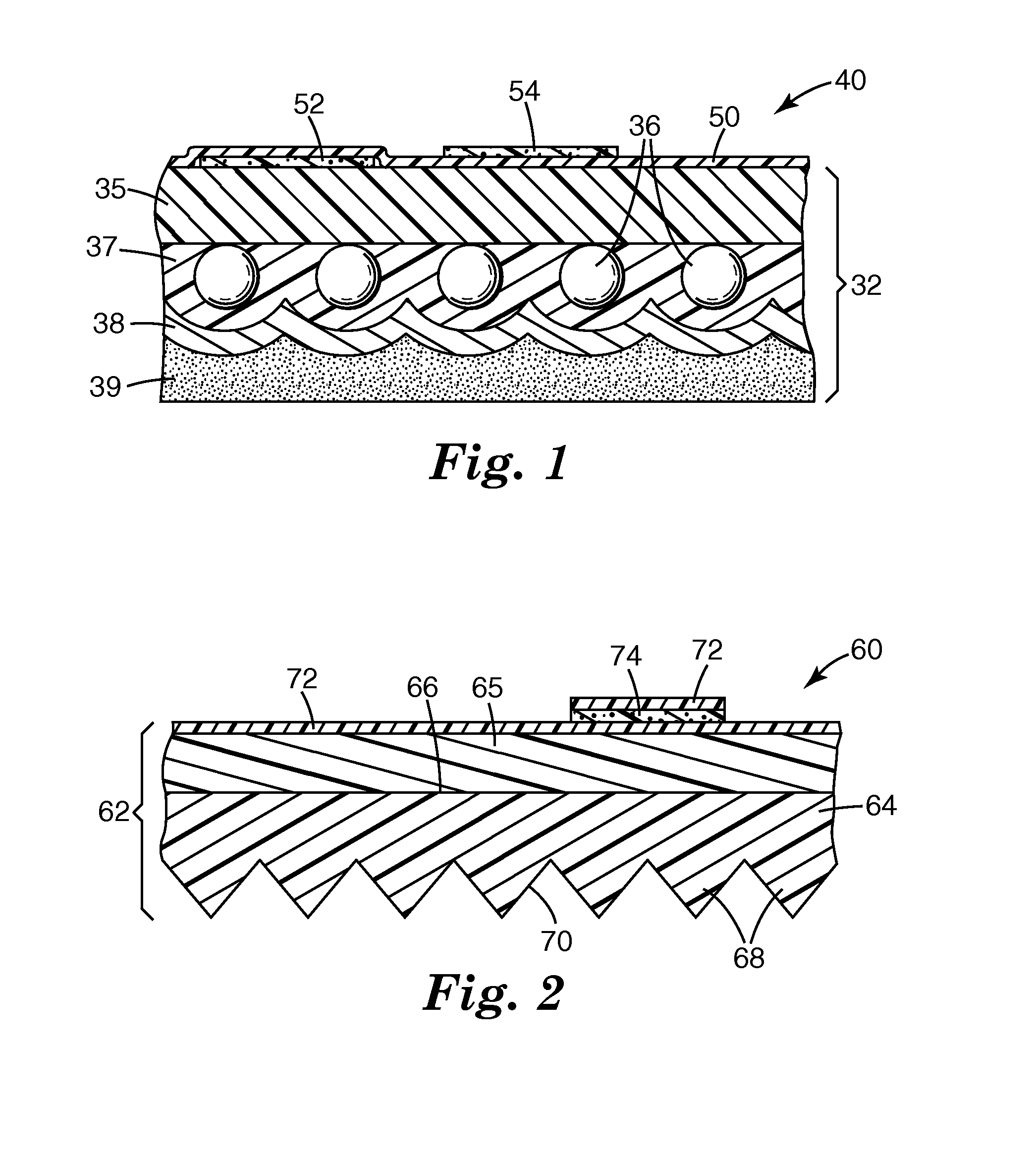Colorless thermal mass transfer compositions and articles
- Summary
- Abstract
- Description
- Claims
- Application Information
AI Technical Summary
Benefits of technology
Problems solved by technology
Method used
Image
Examples
examples 1-6
[0077]A roll of retroreflective sheeting 6 inches wide by about 50 yards long commercially available from 3M under the trade designation 3MTM High Intensity Prismatic Reflective Sheeting 3930 (“3930 High Intensity Prismatic”) was thermal mass transfer printed with a green thermal mass transfer ribbon commercially available from 3M under the trade designation 3M Traffic Green Ribbon (“TTR2308”). The 3930 High Intensity Prismatic sheeting was printed in a pattern of 5.5 inch×3.25 inch solid blocks separated by a 0.75 inch unprinted gap between the green printed blocks.
[0078]Six colorless compositions were prepared according to the following base formulation:[0079]15.5% acrylic resin[0080]6.7% UCAR VAGH vinyl resin[0081]1.3% Tinuvin 400[0082]0.7% Tinuvin 123[0083]75.8% solvent mix (1:1.75 Toluene:MEK)
using the specific acrylic resin identified in Table 3.
TABLE 3SampleEx. 1Ex. 2Ex. 3Ex. 4Ex. 5Ex. 6AcrylicDianalParaloidParaloidParaloidElvaciteElvaciteresinBR-80A-11A-14A-2120102021
[0084]E...
PUM
| Property | Measurement | Unit |
|---|---|---|
| Thickness | aaaaa | aaaaa |
| Molar mass | aaaaa | aaaaa |
| Transmittivity | aaaaa | aaaaa |
Abstract
Description
Claims
Application Information
 Login to View More
Login to View More - R&D
- Intellectual Property
- Life Sciences
- Materials
- Tech Scout
- Unparalleled Data Quality
- Higher Quality Content
- 60% Fewer Hallucinations
Browse by: Latest US Patents, China's latest patents, Technical Efficacy Thesaurus, Application Domain, Technology Topic, Popular Technical Reports.
© 2025 PatSnap. All rights reserved.Legal|Privacy policy|Modern Slavery Act Transparency Statement|Sitemap|About US| Contact US: help@patsnap.com


